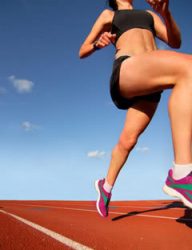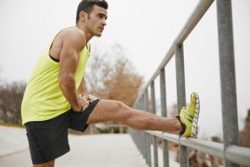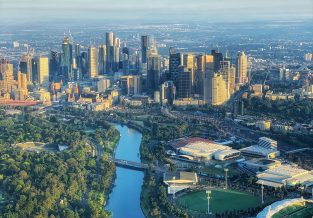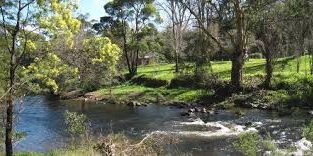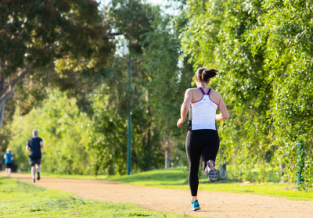Running with Kate Senini: Part 1 of 3
Published on
24 Jul 2017


Written by
Kate Senini
Consultant Physiotherapist
Call us on: (03) 9975 4133
In this 3 part running series, Kate Senini will cover in detail the different types of running patterns, injuries that can occur, the importance of biomechanics and top tips on how to improve speed and performance!
Part 1: Injuries and Patterns
Running Injuries
Running has become an increasingly popular past time in our society as we all strive to keep fit, prevent obesity, gain a sense of well being, generate a social outlet and stress release.
Running fits easily into our busy lives; all we need is a quick change of clothes and we can be out pounding the pavement in no time. It is often not thought of as a “sport” which usually means social level runners place very little thought on technique, distance, speed, warm up, warm down, or recovery.
Running is also the most fundamental movement pattern of most sports. From racquet sports to ball sports to track sports, they require differing combinations of:
- Sprints
- Endurance
- Sudden acceleration and deceleration
- Rapid changes of direction
Certain sports may then be coupled with leaping, jumping and hopping! The requirements of the sport may involve navigating uneven terrain, soft surfaces or hills. There may be a small court or a long and open road. All these factors will predispose runners to injury.
Acute Running Injury
The term “acute” injury is used to describe an injury that has occurred at a sudden specific moment in time. These may include muscle strains, ligament strains, tendon ruptures, and fractures. In some cases more than one structure is affected depending on the severity of the injury.
Acute injuries occur when the degree of force placed on one or more of the above structures is greater than that structure’s ability to withstand it. In the case of muscle strains or ligament strains and tendon ruptures the tissues have been forced to surpass their threshold, and therefore tissue disruption occurs.
This can be seen when a runner attempts sudden acceleration and sustains a hamstring strain, or calf strain, or ruptured Achilles tendon. Running on uneven surfaces often results in ankle ligament strains.
Overuse Running Injury (Non Acute)
The term “overuse” injury is used to describe an injury with a gradual, non specific onset, and is due to poor movement patterns which cause the forces of load to pass abnormally through the body whilst running.
The primary reason for overuse injury is usually due to poor biomechanics whilst running. What this means is there is often poor muscle “activation” patterns. There is an optimal message sent from the brain to each muscle required to run at a specific moment in time that relates to each phase of the running cycle. If this pattern differs from what we know scientifically know is optimal it causes certain tissues (muscles, ligaments, connective tissue, nerve tissue) to become overloaded and overused, whilst other tissue remains underutilised and therefore is often weak.
When we watch elite runners we see a perfect example of:
- Symmetry
- Balance; and
- Muscle control.
We see the ideal running posture and optimal mechanics. These athletes have managed to achieve the ideal balance of muscle and connective tissue flexibility, localised joint stability, global muscle strength and/or endurance that meets the demands of their sport, and rapid nerve receptor input or output to each tissue and joint involved.
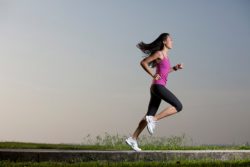
Understanding the Pattern of Running
To understand how our biomechanics affect our running, it is first important to understand running as a functional activity. Running can be divided into four main phases:
- Initial Contact is when the foot first makes contact with the ground. This may be with the heel, the midfoot, or forefoot.
- Midstance is when the whole weight of the body is balanced on the single foot on the ground. At this stage the other leg is swinging through.
- Propulsion is when the single leg with ground contact then leaves the ground.
- Swing is the non-weight bearing phase where the leg has been raised off the ground, then passes the standing leg and is extending in preparation for its next initial contact phase.
All these phases will differ slightly depending on the speed of running required for the demands of a particular sport, and an individual’s technique and style. However the movement patterns, or biomechanics, play an integral part in generating optimal efficiency and minimizing injury at each phase of the cycle. This is because these particular movement patterns dictate how the forces are distributed through each joint and tissue of the body at each phase of running .
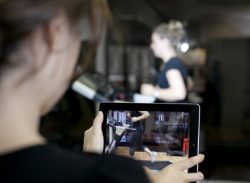
Understanding the Differences in the Running Pattern at Different Speeds
It is important to understand how the running phases alter with increasing speeds.
Joggers
Joggers will make initial contact with their whole foot, or sometimes a shallow heel strike. They will then shift their centre of gravity forward from the trunk during midstance. Push off during propulsion usually occurs through the big toe with generally minimal movement, and the swing phase has relatively minimal hip and knee bend. Some joggers will make their initial contact closer to the midphase stance if running with a higher degree of knee bend.
Medium Paced Runners
Medium paced runners make initial contact with their fore foot, and sometimes the lateral aspect of the heel. There is then minimal midstance contact time as the runner is actively pushing through the foot. Propulsion is generated by push off through the big toe, with the hip extended backward and the knee slightly bent. Swing phase has a relatively increased degree of hip and knee bend compared to joggers.
Sprinters
Sprinters make initial contact with the fore foot (ball of foot), then has very limited midstance time with the foot maintained in the same position as at initial contact. The propulsion phase is explosive through the big toe with hip in maximal extension and knee is flexed. There is maximum arm swing at this phase to assist with momentum. The swing phase has a high degree of hip and knee flexion, with the knee flexed almost to a right angle.
It can thus be seen that as running speed increases there is greater hip and knee bend, a greater range of hip motion required, less foot contact, less time spent with the stance foot in ground contact, and a much greater degree of arm swing. All these factors affect the energy consumption, as greater muscle activity is required to generate greater degrees of movement, with increased load as the speed of running increases.
Coming Next Week: Running with Kate Senini – Part 2
Part 2 of the Running series will be out next week! Kate will detail the biomechanics of running and how best to improve speed and performance!
About the Author
Kate Senini — Consultant Physiotherapist
Kate, who was a founding partner at Pure Physio in 2010, is now working exclusively in a clinical role. Helping people recover from injury and prevent future injuries has always been her true passion!
